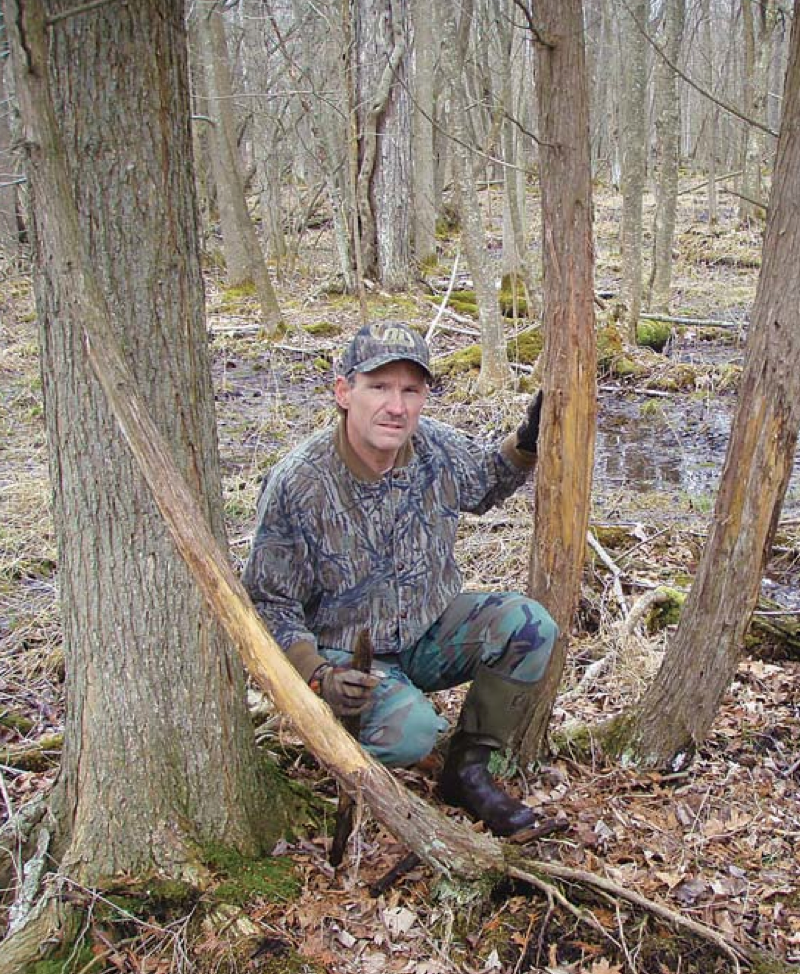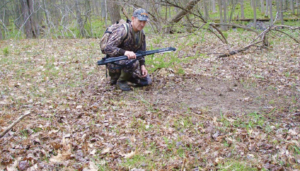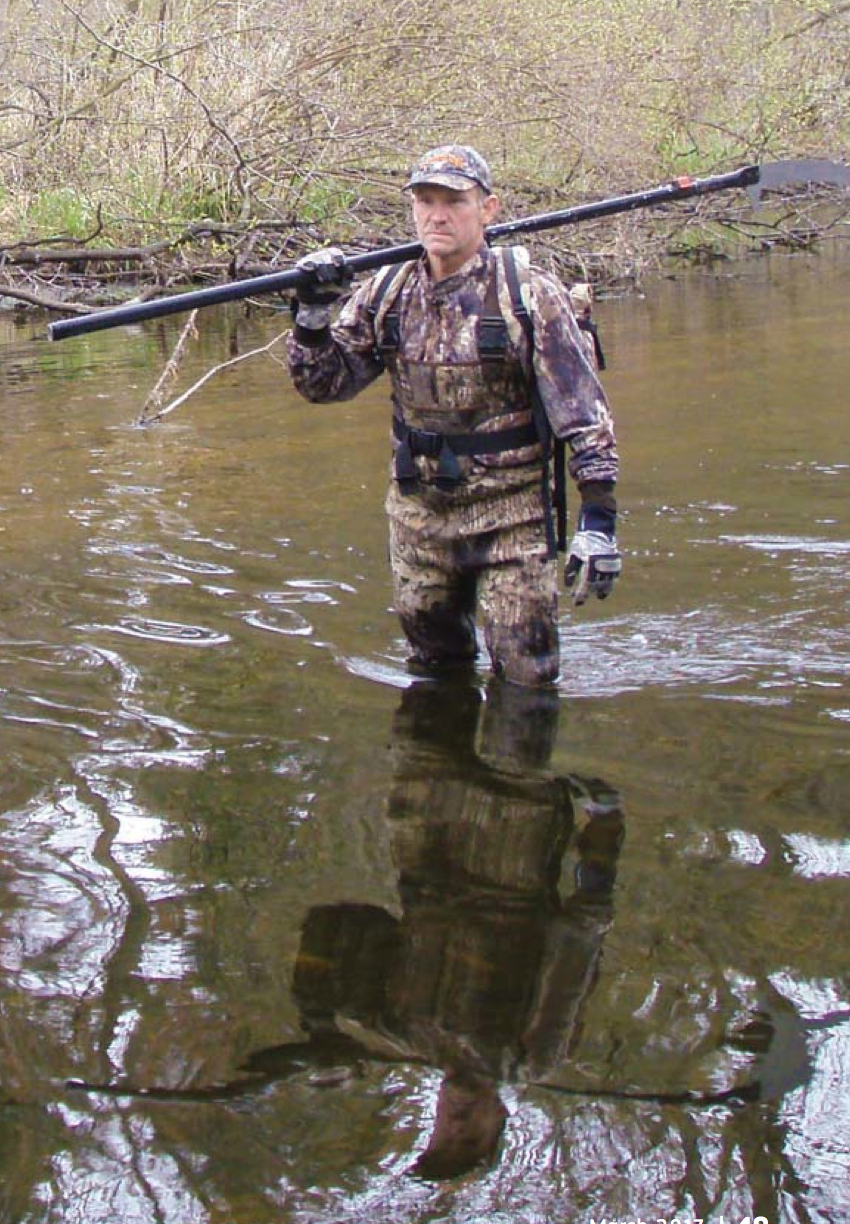Scouting for sign after hunting seasons expire makes good sense because it’s less intrusive, and all of the telltale indicators that mark deer activity during the fall — including the rut — are still highly visible.
For each of the three bowhunting books my son Chris and I co-authored, we researched many statistics and one has remained consistent throughout the years. Nearly 60 percent of all Pope & Young entries are taken during the three-week period encompassing the pre-rut and main rut. With that high of a success rate during a short portion of the season, hunters should focus most of their scouting efforts on finding and setting up locations specifically for the rut phases. The question then becomes: When is the most opportune time to scout for rut phase locations?
There’s no question the majority of bowhunters scout for and prepare locations during the preseason. But the downside is that during preseason scouting ventures they’re looking at summertime sign in the form of bedding to feeding area routes, and some buck signposts in feeding areas. After all, summer deer traffic is primarily based around food.
During preseason, the previous season’s rut signposts, such as scrapes, worked licking branches, rubs and general rut phase activity sign, is grown over and nearly impossible to identify. Then there’s a little thing called heavy consequential hunting pressure (HCHP), which is a term I derived to define what many hunters in highly populated states have to deal with — easily 10 to 30 bowhunters and twice that number of gun hunters per square mile (640 acres), with most of them target- ing any legal antlered buck. Bucks surviving beyond their first set of antlers in such areas seemingly have PhDs in avoiding hunters.
HCHP has a direct influence on how many bucks survive beyond their first hunting season, the types of security cover they move in, amount of time they move during daylight and how they react to any human intrusion, including preseason and during- season scouting. In such areas, an opportunity at a 2 1/2-year-old or older buck is not an annual happening. A single mistake could determine the fate of the entire season.
In some managed areas with hunter engagement criteria or rules there might be many hunters, but those hunters simply pose a human presence, not a daytime consequential threat to bucks until they reach the kill criteria. When there are no consequences for daytime movement patterns while bucks grow to maturity, there’s little reason for them to alter those vulnerable patterns, making them extremely easy to pattern and kill once they do reach the kill criteria.
Preseason scouting by other hunters on the same property or on surrounding properties in heavily hunted areas is out of your control and will likely turn any mature bucks nocturnal prior to the season and crush any hope of getting the drop on an early season mature buck. However, by scouting and setting up on the past fall’s rut sign during post season you will have to do very little if any in-season scouting for rut activity because most rut activity remains in the same areas year after year and you’ll already have locations identified and ready.

ADVANTAGES OF POST SEASON SCOUTING
Deer alter their patterns and congregate to the best and easiest food sources when the snow flies, making runways left in the snow rather meaningless as far as next season’s rut activity is concerned. Wait until the snow has melted before conducting your post-season scouting. Here are a few guidelines:
1. The previous season’s buck sign, such as rubs, rub lines, scrape lines, primary scrape areas, utilized overhanging licking branches and runways are still very obvious once the snow melts.
2. During post season, ground and tree foliage is gone, just as it is during the rut phases, so while scouting, the area will look very similar to what it will look like during the rut phases.
3. Every inch of your hunting area can be thoroughly scrutinized with as many visits as needed because spooking deer will not affect next season’s deer movements like preseason scouting and location preparation would.

4. When setting up treestands, you see exactly what background cover you’ll have, if any. This should dictate how high up the tree or in what tree you need to set up.
5. You can utilize brush to block sections of out-of-range runways and then create a new section so that the runway passes within your shooting range. And by next fall the altered deer movements on your modified runway will have become habit.
6. I also walk or crawl down each and every runway leading to a location for at least 50 yards and remove deadfalls and cut overgrown brush along them to make it easier for deer, especially bucks with headgear, to travel down.
7. At this time of year a scent-free regiment is not required.
From the Internet print aerial and topographical photos of yours and the surrounding properties in the largest magnification possible. Aerials offer overviews and help in locating funnels, water, points, timber, crop fields, marshes, etc., some of which can be difficult to recognize from ground level. Topo’s show undulations, saddles, ridges and terrain feature breaks. The surrounding property layouts will aid in learning where and why deer cross the property line fence.
Once on foot focus your attention on the following sign for stand locations: primary scrape areas; funnels between bedding areas; funnels between bedding and feeding areas; fruit and mast trees; rub lines; clusters of rubs; convergence points of two or more runways; and water in areas with minimal water sources.
A primary scrape area is a group of several ground scrapes in a somewhat open area. They are most commonly found near preferred food sources that have concentrated doe activity. While ground scrapes are made by bucks, each scrape will have one to several overhanging licking branches that are socially scent marked by does and bucks with their saliva, preorbital, nasal and forehead glands.
When setting up in a scrape area, position your stand near the scrape with the most utilized lick- ing branches because it is likely being revisited the most. Keep in mind that scrape areas must offer perimeter cover for daytime visits, thus eliminating common perimeter scrapes around short crop fields as good hunting locations. On managed private property, big bucks are often taken along perimeters of short crop fields or food plots, but remember; these are areas where there are many mature bucks and they are not heavily hunted.

Fruit and mast trees such as apple, pear, white oak, or whatever grows in your region, must be noted and checked later in the year for food production and set up accordingly. When trees producing preferred food are located within cover, they will usually be visited prior to the deer entering exposed crop fields during the security of darkness and before bedding down in the morning. It’s common for fruit trees to have scrapes beneath them during the years they yield food. Keep in mind that crop rotations and fruit and mast production can alter deer traffic from year to year.
Funnels are narrow areas between two larger areas somewhat similar to the middle section of an hourglass. In HCHP areas, my preference is to focus on funnels between bedding areas that offer adequate security transition cover. During the rut phases, bucks cruise their core bedding areas in search of receptive does, using the best available transition cover. I’ve found this cruising activity usually takes place between 11 a.m. and 3 p.m. and during the rut phases only.
Follow rub lines that offer security cover and if one leads to a bedding area and you know the buck survived, re-check it prior to the season for fresh rub activity and if found set up as close to the bedding area as possible and hunt it within the first couple of days. In HCHP areas, after a couple of days of season, other hunter pressure will likely turn mature bucks nocturnal until the rut phases, at which time they abandon their rub lines and adjust their movement patterns in search of does.
During post season, bedding areas should be thoroughly scrutinized. They often have interior terrain features that are hubs for rut activity and will be easily identified. If such an area is discovered, set it up and do not return until the rut to hunt it.
WATCH: How to See and Kill More Deer in Transition Zones
In HCHP areas it is common to hunt fragmented parcels of 5 to 40 acres. If there is a bedding area and you don’t hunt within it a couple of times during the rut phases, you are making a huge mistake. Quite often these areas are the only places where a mature buck will be vulnerable during daylight hours. When hunting within a bedding area, you must commit to an all-day hunt and be in your tree a minimum of an hour and a half prior to first light and stay until after dark. By doing this you will not spook deer with your entry or exit.
Check the points of draws offering security cover that protrude into tall weed or crop fields. Mature bucks in HCHP areas will almost always utilize the best available cover when transitioning to exposed fields. The best location I ever hunted was near the point of a long, narrow brush- and tree-filled draw that protruded into a crop field. Bucks felt comfortable moving just before dark or at dawn through the draw due to its security cover.
Check for water sources in areas without creeks, rivers and wet swamps. During warm weather, deer might frequent water at any time of day if the source offers sufficient perimeter cover for daytime activity.

When scouting state land I have one standing rule: If I can access a location by walking in an upright position I will not set it up. I only set up places where most other hunters refuse to go because it requires too much work. Access to these types of areas usually require waders, hip boots, a canoe, a boat, or crawling on hands and knees through brush. These are the areas mature deer are forced into and I refuse to waste my hunting time in the easily accessed areas where the multitudes of other hunters go.

Always look for indications of hunting activity — scars on trees from climbers, stands left in trees, shooting lanes and bare spots from bait piles. Knowing where other hunters are is oftentimes more important than locating deer sign.
Setting up on the best sign in the world is meaningless if that sign was made during the security of darkness. In HCHP areas, other hunter activity will influence daytime deer activity and movement patterns more than any other factor, period!
Note all pertinent information about other hunters’ locations, such as how high they hunt, type of location, whether their location in the tree offers adequate cover, whether they have proper shooting lanes and if they bait, and how much attention they pay to detail. You can estimate the competence level of other hunters by their stand locations and adjust your seasonal and daily timing accordingly. For instance, if their stands are on short crop field edges, they are helping you by causing deer to spend more time within cover and improving your chances of deer encounters.
The more consequential and heavier the pressure, the better mature deer are at avoiding all daytime movements in any type of vulnerable areas. Thus, understanding average hunter behavior and hunting in a different manner is vital to success in heavy hunted areas. As you scout and set up locations, mark your aerial photos or draw maps with notes so that you have a foundation on paper for a plan of attack. Just as any successful business endeavor requires a plan, you should have a plan in place for each phase of the hunting season.
Other than some brief preseason scouting for early season hunts, the vast majority of your scouting and tree preparation should be done for the year. Whenever a preseason trip is required to confirm active scrapes, food production, rub lines or any other activity, a properly cared for activated Scent Lok suit, gloves and clean rubber boots are required to keep human odor to an absolute minimum.
— John Eberhart is an accomplished big buck bowhunter from Michigan who has exclusively hunted heavily pressured public and knock-on-doors for free permission properties for 52 seasons. Learn more about his tactics through his instructional books and DVDs available at: www.deer-john.net


